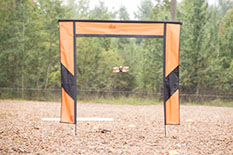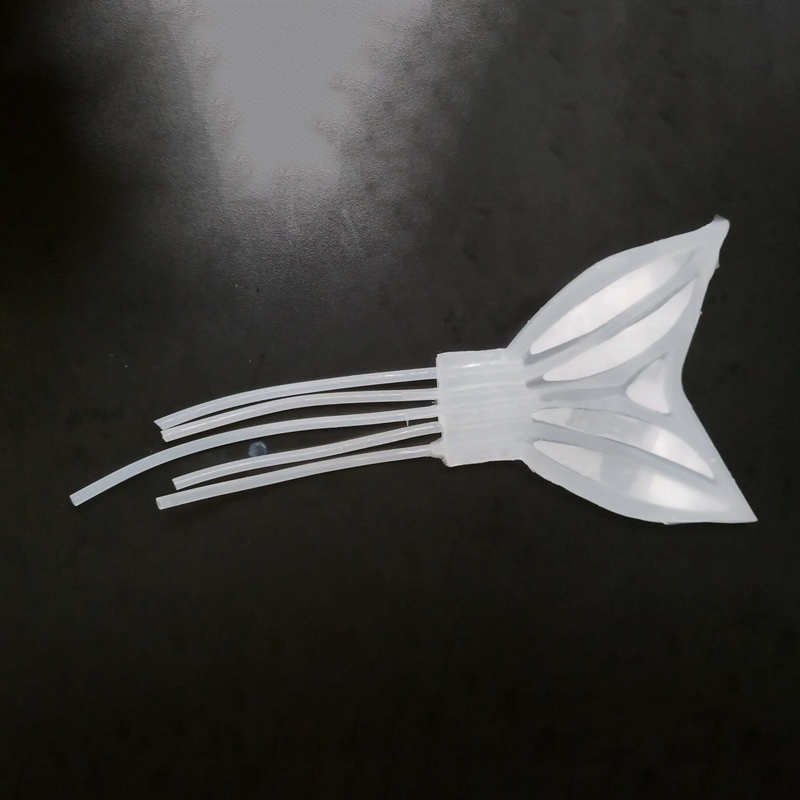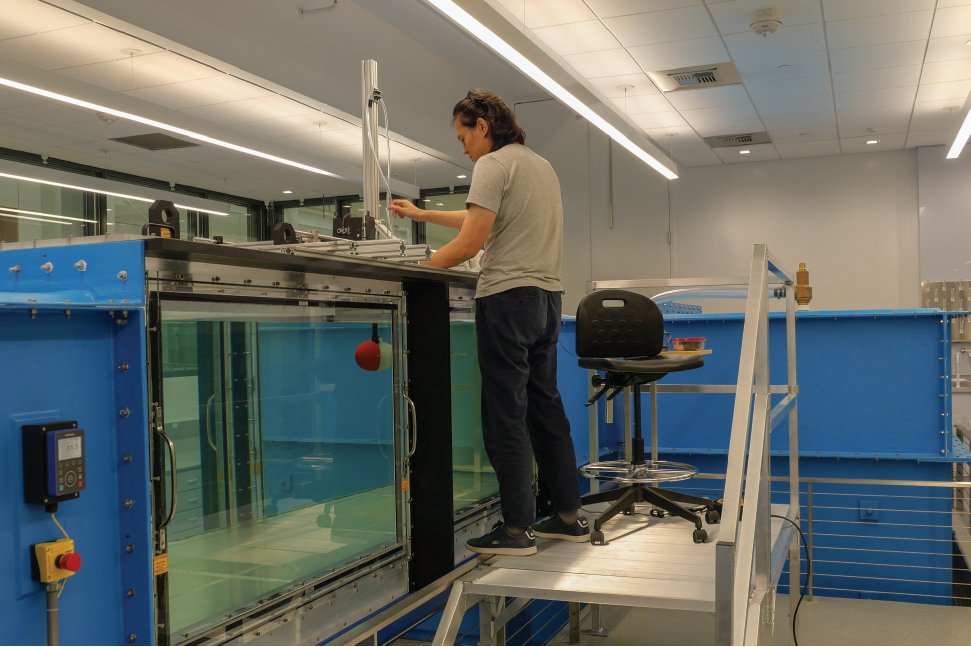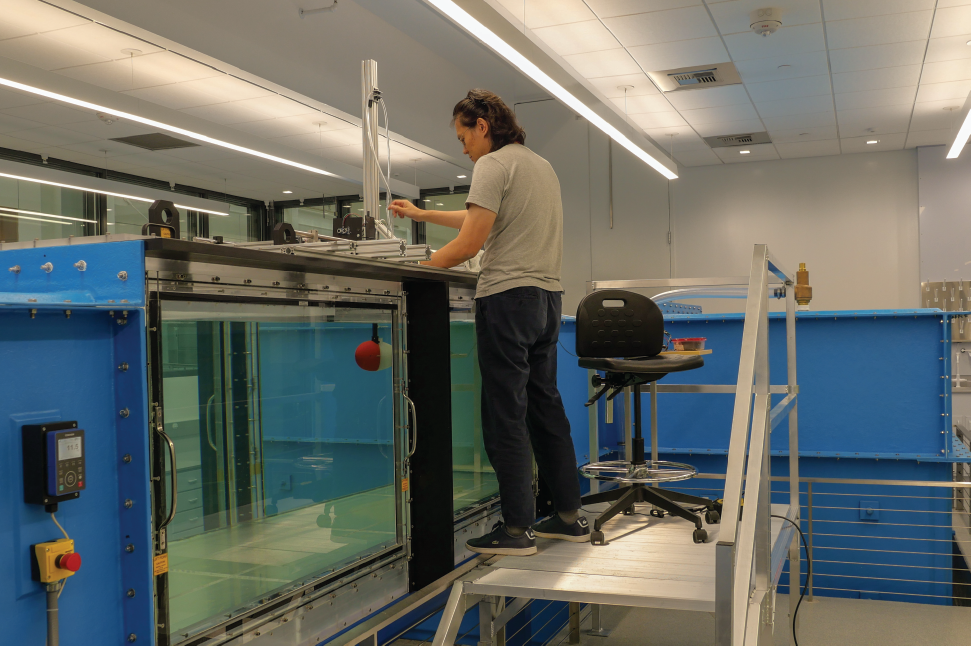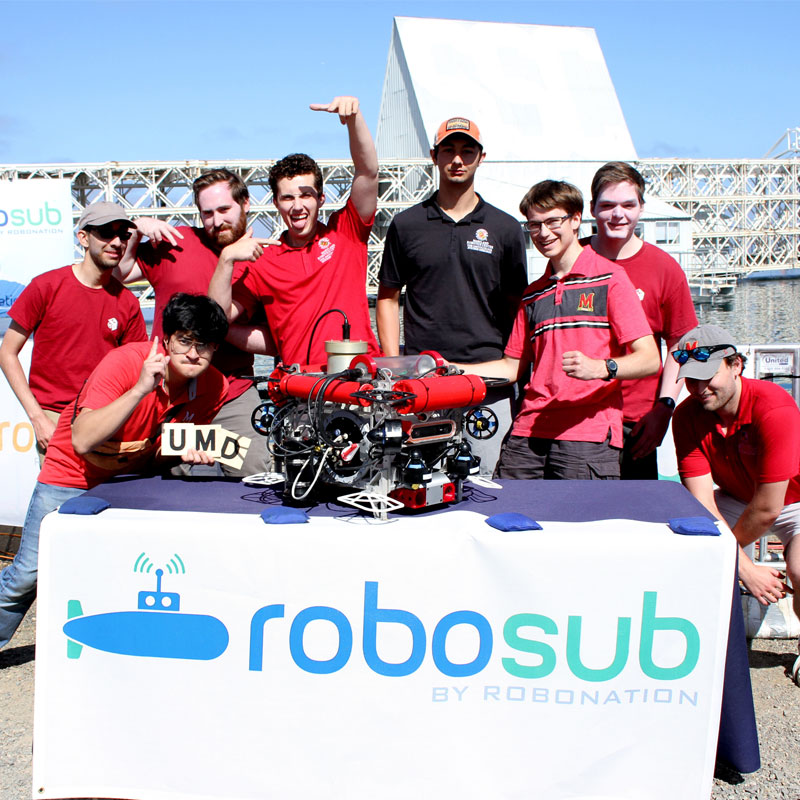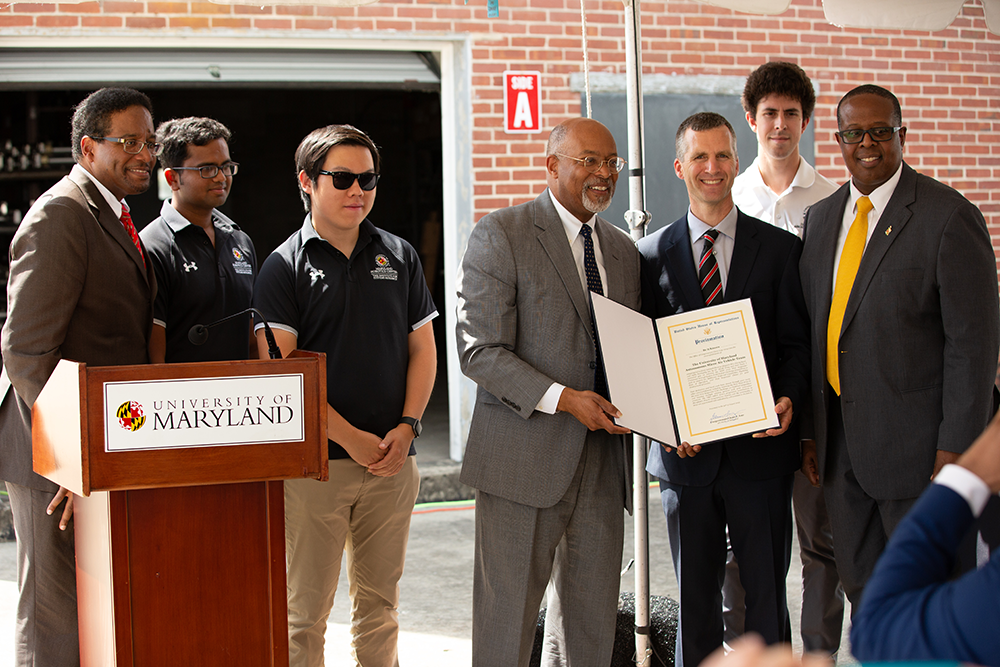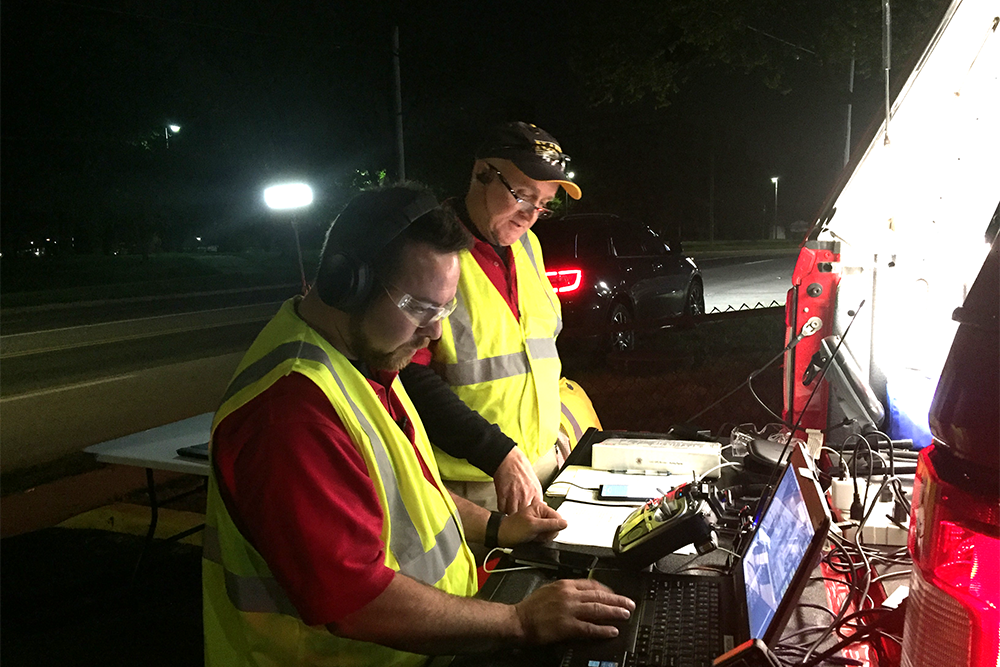News Story
Special Delivery
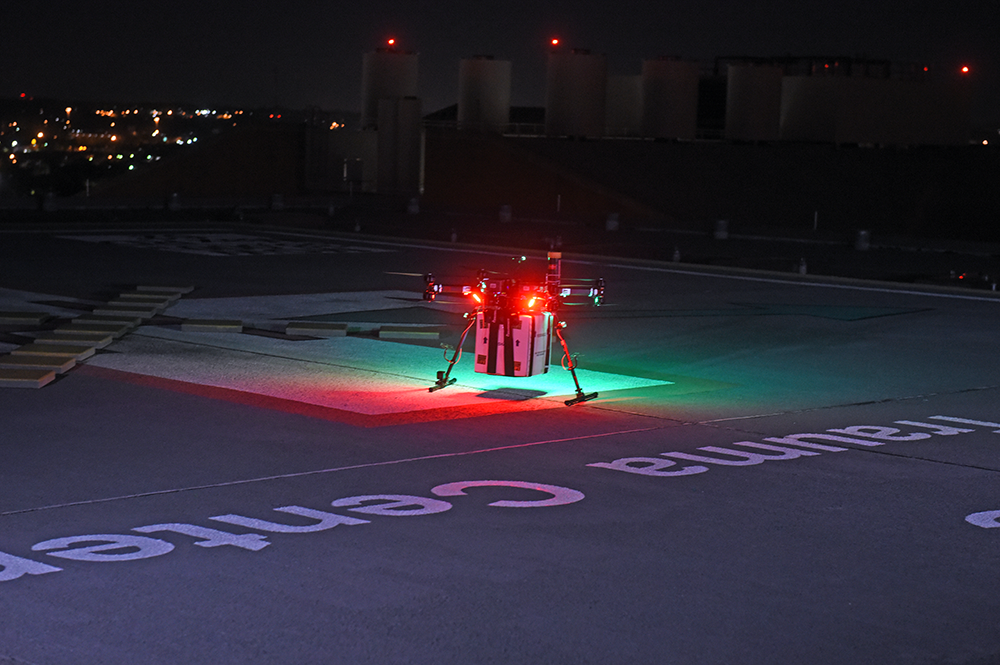
A UAV lands to successfully deliver a donor kidney to surgeons at the University of Maryland Medical Center in Baltimore for successful transplantation into a patient with kidney failure.
In a first-ever advancement in human medicine and aviation technology, a University of Maryland unmanned aircraft delivered a donor kidney to surgeons at the University of Maryland Medical Center in Baltimore for successful transplantation into a patient with kidney failure. This successful demonstration illustrates the potential of unmanned aircraft systems for providing organ deliveries that, in many cases, could be faster, safer, and more widely available than traditional transport methods.
In 2018, a human organ was transported by an unmanned aerial vehicle (UAV), popularly known as a drone, for the very first time. University of Maryland researchers conducted the test flight with an off-the-shelf hexacopter, albeit outfitted with a special container to carry its special cargo.
Nearly a year later, the UAV that was the first to deliver a viable, donated kidney to a patient whose life depended on it was anything but average.
To create a machine worthy of the groundbreaking three-mile flight on the night of April 19, a team of UMD engineers worked over the course of two and a half years to design and build an automated vehicle and system for the task. Yet when they first got the call about whether such a flight was possible, two of the project’s leaders had very different initial reactions.
“Yes,” said Matthew Scassero, director of UMD’s Unmanned Aircraft Systems (UAS) Test Site.
“No,” shot back Tony Pucciarella, the Test Site’s director of operations at the time.
This yin-yang response—unbridled enthusiasm for pushing the innovation envelope, complemented by a careful and methodical pumping of the brakes—is characteristic of the Test Site’s work. Though they laugh now when recalling that moment, both men acknowledge that it is exactly this kind of chiaroscuro that is critical to their success.
“My job is to be visionary, to blaze trails, to be the first to do things,” Scassero says. “But we need to get there responsibly.”
“Initially saying ‘no’ is to get the time we need to make it all right—and move forward from there to ‘yes,’” says Pucciarella. “This was a was a high-risk operation.”
Pucciarella’s push-back stemmed from the fact that conventional UAVs are essentially bundles of failures waiting to happen. If any one component falters—motor, rotor, guidance system, power controls—the aircraft is doomed. And, lacking wings, a drone’s descent isn’t a graceful glide to terra firma; it’s a catastrophic plunge to earth.
So when Dr. Joseph Scalea called about delivering a live human organ to a living human patient, the Test Site team had their work cut out for them.
Scalea, an assistant professor at the University of Maryland School of Medicine, had read about the Test Site’s successful 2016 experiment to deliver a cache of medical supplies via automated aircraft across the Chesapeake Bay. He wondered if something similar could be done with a donated organ.
“The transport of organs takes too long, is too expensive, and is unsafe,” Scalea says. “I do not accept that that’s the best we can do. Technology like drones could enable us to transport organs directly from the donor hospital to the recipient hospital.”
“Autonomous aircraft is the way we’re going to transport organs for transplant someday. Let us be the one that builds the bridge to make it happen.”
— Matthew Scassero, Director, UMD’s UAS Test Site
Kidneys were the obvious organ with which to attempt such a feat: of the 124,000 people currently on the national organ waiting list, just over 103,000 need a kidney. Yet in 2018, only 21,167 people waiting for a kidney received one.
Time is of the utmost essence: every hour that a donated kidney is on ice increases the risk for transplant complications. And new federal regulations mandating changes in the organ-matching system has boosted the average distance some donated kidneys must travel to reach a patient—more than 700 miles—which means that an increasing number of organs are transplanted after 24 hours.
Yet moving organs from donor to recipient remains the single most unpredictable variable in the entire process. Delays in commercial air schedules, costly plane and helicopter charters, traffic jams on roads, and even periodic crashes of transport vehicles means that an estimated 20 percent of donated kidneys must be discarded every year.
Norman Wereley, chair of UMD’s Department of Aerospace Engineering, connected Scalea to the Test Site team after Scalea found him through an internet search.
“The delivery of pizzas and burritos never seemed a compelling enough reason to have the Federal Aviation Administration modify rules to allow unmanned systems,” Wereley says. “But when Joe called to talk about getting organs delivered as quickly as possible after donation—well, that’s a pretty compelling reason.”
No stone was left unturned in the process that culminated in the flight. Every last piece of the vehicle was selected for its reliability and robustness, every possible route to failure analyzed and accounted for.
Scassero, Pucciarella, and numerous others at the Test Site, including project engineer Luan Duong, set about addressing as many of the conventional UAV single-point failures as possible—which, on an average quad- or hexacopter-style drone, is in the neighborhood of 40 different components. Including all the moving parts, Test Site engineers scrutinized power distribution, communications systems, and central computer and navigations systems, striving to use only the best of commercially available drone components.
Among other redundant safety features, the final design of the 50-pound UAV boasted eight rotors (two could fail and the vehicle would still fly), a parachute, a backup battery, and a mesh network radio system able to automatically select the best communications connections at any point along the flight path.
In addition to coordinating participation between multiple City of Baltimore agencies and partners for the flight itself, Scassero and Pucciarella say the project also offered an opportunity to contribute to the ongoing conversation about how UAVs will one day be integrated into the national airspace.
This particular UAV worked without a hitch for its mission, as it was designed specifically for this job. In the future, it’s possible that each type of organ will require a different kind of aircraft. And UMD’s UAS Test Site will be working over the next several years to develop a corridor network for UAVs that may one day be used for even more organ deliveries.
“We’ve overcome the hurdle of whether this is possible,” says Charlie Alexander, president of the Living Legacy Foundation of Maryland, the organ procurement organization that partnered with the University of Maryland on the project. “We flew a three-mile mission in nine minutes. We want to fly 100-mile missions in a matter of minutes or hours.”
“When Dr. Scalea said he had this wild, crazy idea to fly a human organ to a real person with a drone, and asked, can we do it? I said yes,” Scassero adds. “Looking 10, 20, 30 years into the future—I can see it easily, in a heartbeat. Autonomous aircraft is the way we’re going to transport organs for transplant someday.
“Let us be the one that builds the bridge to make it happen.”
Published September 9, 2019
